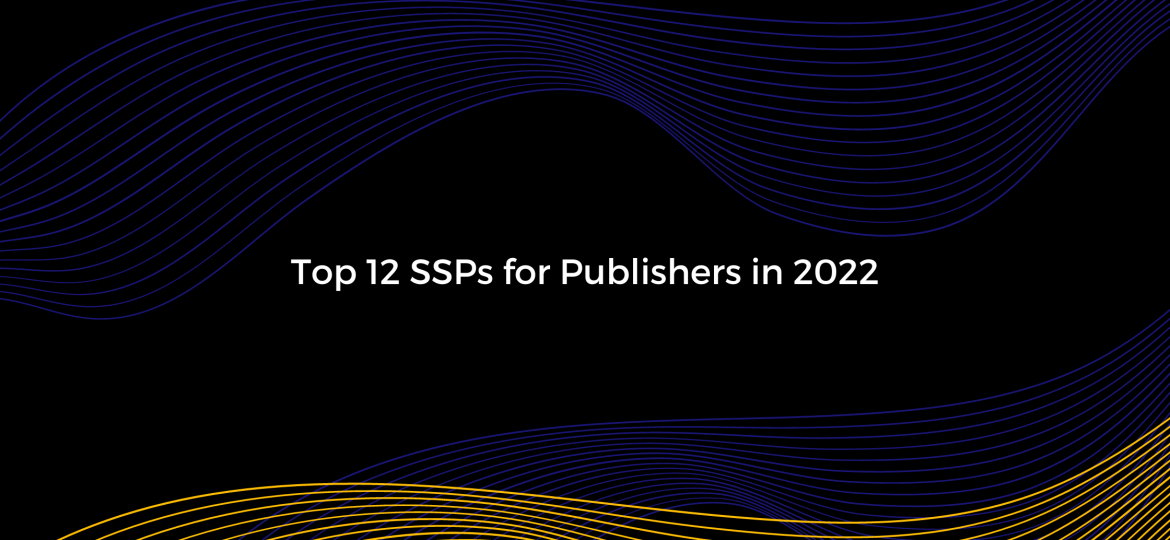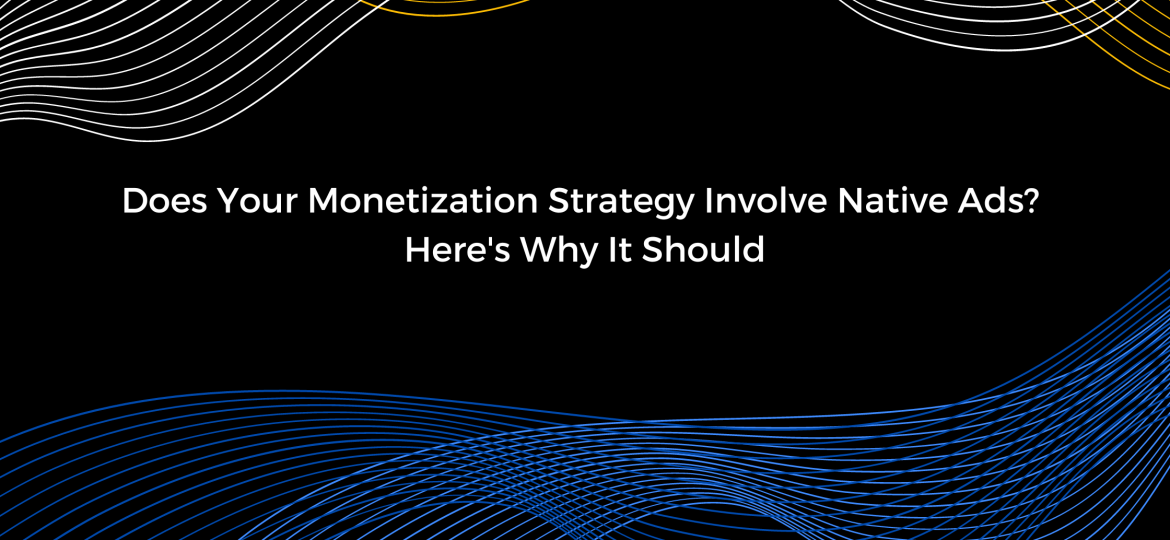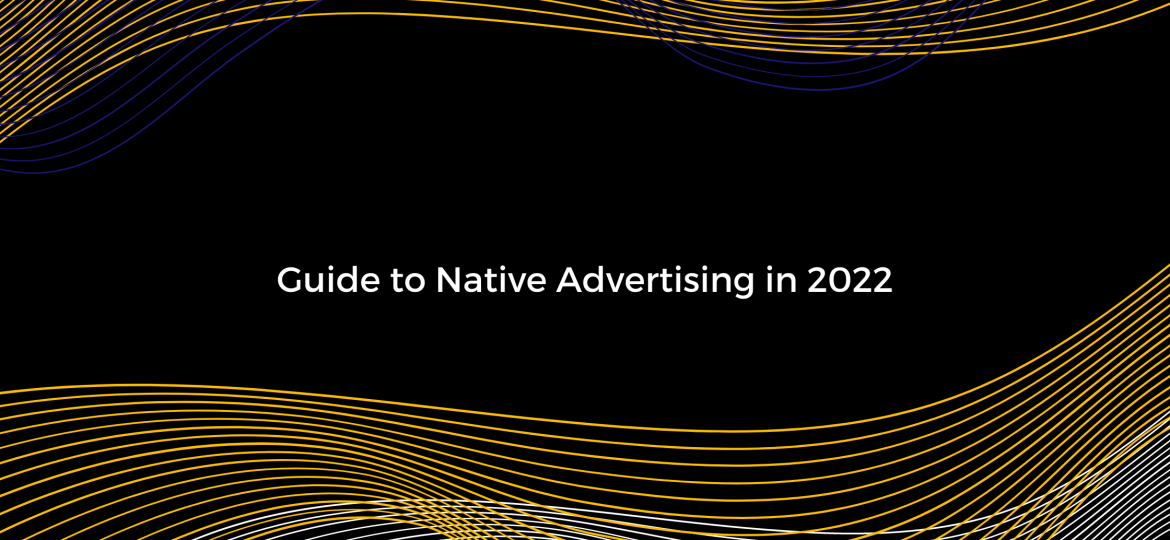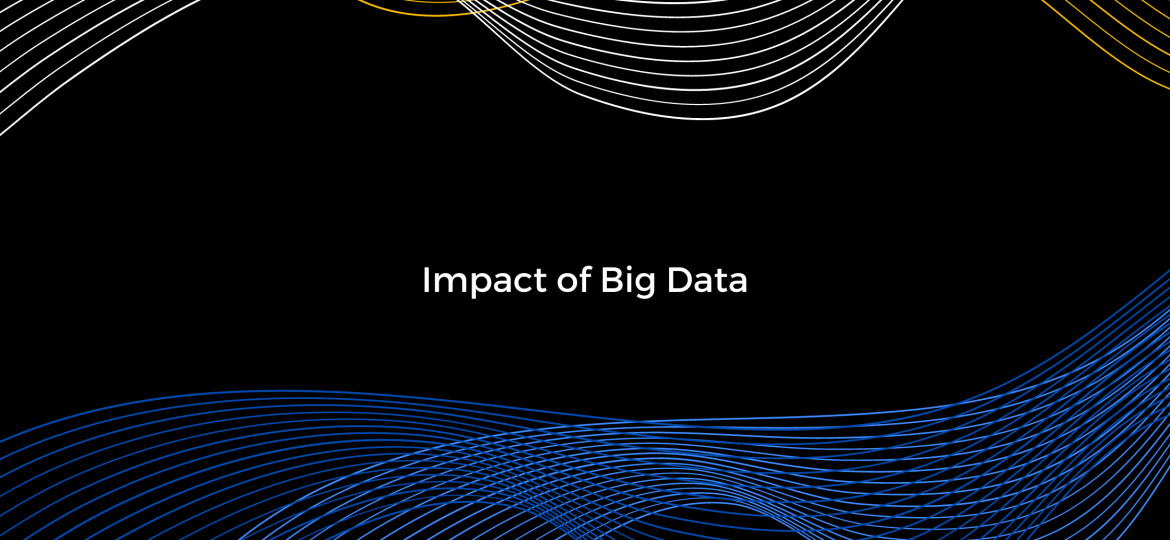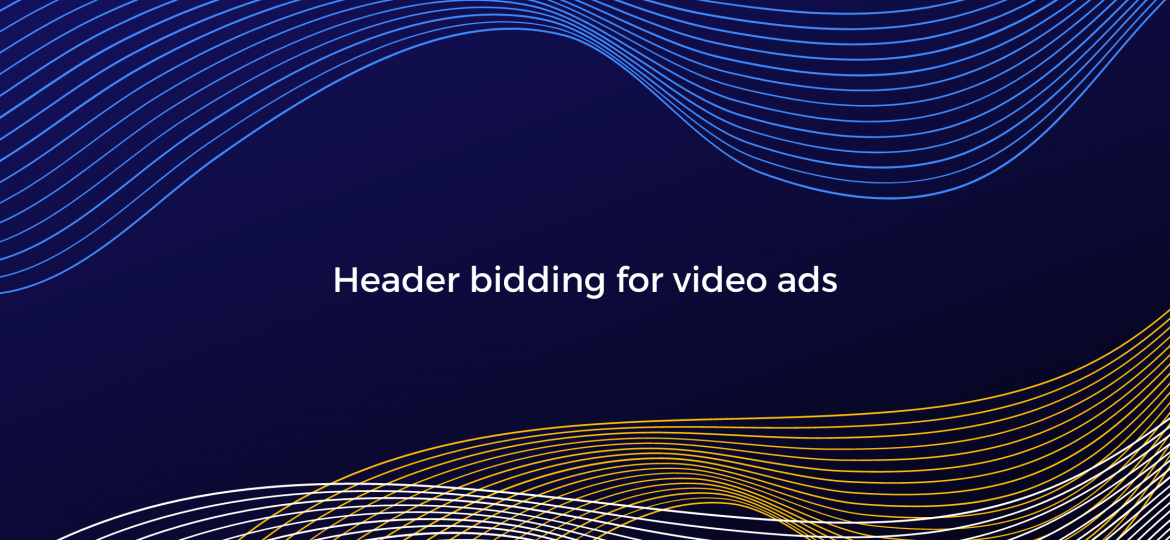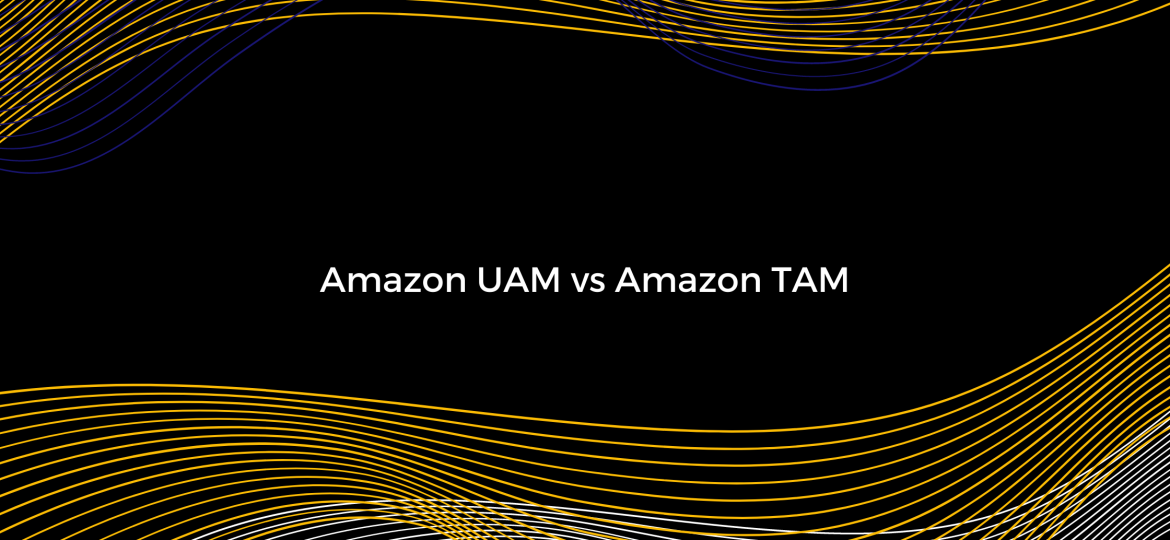Are you using an SSP? Do you know which are the best ones? SSPs can be valuable partners, especially if you find the one that best suits your needs as a publisher. While Google Ad Manager has dominated the field for a while, our article lists some of the other top SSPs that excel in the industry. Take a look at the companies below to learn more about their strengths and unique features. SSP: a definition SSP stands for Supply-Side Platform or Sell-Side Platform. It’s a solution that automates the sale of digital advertising space via real-time bidding. Aimed at publishers, it helps them monetize their inventory programmatically by exposing it to different demand sources. This may include demand partners such as ad exchanges, ad networks, and DSPs. By creating increased competition for the ad inventory and optimizing the setup, SSPs maximize publisher revenue. Top SSPs for publishers Let us take a look at some of the best SSPs in the industry. Of course, no single solution can serve as a panacea and satisfaction depends on each publisher’s priorities and criteria. However, some companies have consistently ranked well and are worth exploring. 1. Magnite Magnite (Rubicon Project + Telaria) is a large SSP that works with ad formats across all channels and premium demand. It offers Private Marketplaces (PMP), Programmatic Guaranteed (PG), and Auction Packages. Magnite’s goal is to provide publishers with transparency and expertise in the quest to maximize ad revenue. 2. Index Exchange Index Exchange is an SSP…
Jeevan Pathare
With so many different types of digital advertising, it can be difficult for publishers to prioritize. What’s more profitable? What’s more user-friendly? What’s in high demand right now? Native advertising is an answer to all those questions. Our article talks about native ads, what’s different about them, and why publishers shouldn’t overlook them. What is native advertising? As you’re probably well-aware, native advertising is paid branded content that looks and feels like the editorial content on a website. As opposed to standard display ads, which are essentially banner ads, native advertising campaigns aim to be more relevant, less intrusive and bring more value to the users. The different types of native advertising include in-feed ads, in-article ads, recommendation widgets, sponsored products, etc. It could also involve branded or sponsored content. Last but not least, there is native video advertising. Why are native ads good for publishers? Native presents a good opportunity for publishers due to several reasons: Revenue Native advertising is a preferred tool for advertisers in creating brand awareness and building customer relationships. As brands generate more native content, the demand for native ad inventory grows. So does the competition. Therefore, publishers can enjoy CPM rates reaching $10 or even $20. Engagement and viewability Native ads are considered the cure for ad fatigue and ad blindness. They generate CTR rates that are 8.8 times higher than those for standard banners. In addition, users view them over 50% more often than display ads. And good ad campaign performance is sure…
Native advertising is growing. Since the start of the pandemic, users have been more and more exposed to ads. This has made traditional online advertising less effective, urging advertisers to focus on non-intrusive native campaigns. The numbers speak loudly and clearly. Native display ad spending increased from $47.33bn in 2020 to $57.27bn in 2021. That trend is expected to last. The native advertising sector is predicted to continue growing, reaching $400bn by 2025. Let us take a closer look at native advertising, what makes it so popular, and some of the latest trends. What is native advertising? Native ads are meant to blend in. While they’re still paid ads, they’re designed to look as natural as possible, without disrupting the user experience. Unlike display ads, native ads have the same feel and function as your website content or app. To differentiate them from editorial content, they’re labeled as ‘Sponsored’, ‘Promoted’, etc. Native ads usually contain less text, relying on captivating images to get users to click. Native CPMs and CPCs are higher than those of display ads. Forms of native advertising include in-feed ad formats (e.g. on social media platforms), content recommendations (a.k.a. recommendations widgets), sponsored posts, and paid search ads in search engines, among others. Why is it trendy? Users have come to expect more from online advertising. They’ve grown more resistant to intrusive ads. Therefore, creatives are expected to be more tasteful and more relevant to user interests. Since native ads rely on a softer, more natural feel,…
A decade ago, “Big Data” was still a pretty vague term. But a lot has changed since then. The concept has become an important part of the digital advertising industry. So much so, that data is considered its ‘currency’. The success of many businesses and their ability to stay relevant and competitive is determined by their preparedness to collect and analyze data. We’re talking gigantic amounts of it. And the benefits it brings are significant. How it all works and what it does, we’re here to learn more. Let’s talk about what Big Data is and how it’s been shaping the ad tech industry. What is Big Data? Big Data is a term that describes large amounts of information, both structured and unstructured, that needs advanced technology to be processed and analyzed. We all know that users generate data all the time by carrying out simple tasks: browsing the internet, shopping online, using mobile applications, etc. Some of this data is structured, which means it consists of clearly defined data types with patterns that make it searchable. On the other hand, a lot of the data is ‘chaotic’. That’s qualitative data that hasn’t been structured using a predefined model. It comprises up to 80% of all data and includes images, videos, social media posts, etc. that are hard to manage. However, the use of new technology such as artificial intelligence has made it possible to harness it. This way, companies have access to more and new types of data to…
If you are new to programmatic, all those three-letter acronyms might be a bit confusing. In this article, we will explain what supply- and demand-side platforms are, what they are used for and by whom, as well as the advantages they bring, and how they fit within the ad tech ecosystem. What is an SSP? Supply-side platform, sell-side platform, or SSP, is a piece of software that is designed to help publishers monetize their ad space programmatically. They connect publishers to multiple ad exchanges, ad networks, and DSPs at the same time, thus increasing the number of bidders for their inventory and boosting yield. SSPs allow publishers to set price floors, determine rules for their inventory, create direct deals, collect and analyze campaign data. Benefits One of the main advantages of using an SSP is the better data that publishers get access to. Information such as which bidders participate in the auctions, what your best placements are in terms of profitability, can be used for improved yield optimization. Audience data analytics can help enhance targeting and package inventory to negotiate better deals with advertisers. Another important aspect of using an SSP is the granularity of control that publishers get over their inventory. Setting price floors for specific buyers and/or channels, blocking certain advertisers, or allowing only selected buyers to a specific portion of your ad inventory are just some of the options available to publishers. Last but not least, the possibility to get so many ad exchanges, networks, and DSPs…
Everything you should know about Google AdSense is one of the few ad tech platforms that still operates under second-price auctions. However, that’s about to change till the end of 2021, as Google recently announced. In this article, we’ll cover what exactly is going to change, why it’s happening, and what it means for publishers. What’s happening? Google will switch AdSense auctions to first-price by the end of the year in order to streamline processes and simplify how buyers purchase your inventory. The move will apply to AdSense for Content, AdSense for Video, and AdSense for Gaming. There will be no changes to AdSense for Shopping and AdSense for Search. First-price auctions are expected to “make it easier for buyers to purchase your ad space sold on AdSense”, as per Google’s announcement. But how exactly do first- and second-price auctions differ? Let’s take a look. First-price vs second-price auctions For quite some time, the most common way that actions for digital inventory worked was the second-price model. With that method, buyers paid whatever the second-highest bid was plus one cent. First-price auctions, on the other hand, mean that the final price would be whatever the highest bid in the auction was. This brings more transparency to the process as the so-called “ad tech tax” cannot be manipulated through the murky fee structure of second-price. Why is Google making the change? AdSense is one of the last remaining platforms to still be utilizing the second-price auction model and it was a…
Video header bidding has been gaining popularity in recent years and has even become a buzzword in the ad tech world lately. Video ads have great engagement levels and high revenue potential, so it’s only natural that both advertisers and publishers are interested in them. Before header bidding, the programmatic video was being implemented through the old-school waterfall method. With the advancement of technology, however, video header bidding is gradually becoming the norm. Let’s see how it works. What is video header bidding? Video header bidding is the means that publishers use to open up their video ad inventory to multiple demand partners at the same time. The goal is to have a fair auction and increase the competition. Just like header bidding for display ads, video header bidding can be conducted both on the server and on the client-side. Video header bidding is similar to traditional header bidding, but the execution is different. The main distinction in the process stems from the fact that video advertising involves a player. We will now discuss each type of video header bidding to see how they differ. Client-side video header bidding To run header bidding, the publisher has placed a header bidding wrapper in the header of the website. With client-side video header bidding, once an impression is available, the wrapper calls the SSPs/Ad Exchanges and conducts the bidding on the user’s browser, most often after a specified timeout. The winning bid in the auction is then passed to the publisher’s ad…
According to Kevel’s header bidding tracker in 2021 Amazon has become the top header bidding adapter, with 78% market penetration, among the 10K US publishers who do header bidding. Amazon’s server-to-server wrappers, TAM and UAM, are bringing Amazon’s unique demand and their highly valuable first-party data to the table, an opportunity for revenue growth that few would pass. Let’s take a look at both to find out when each is used and what are their advantages and disadvantages. What is Amazon UAM? Unified Ad Marketplace (UAM) is a server-side header bidding solution, created by Amazon for small and medium-sized website publishers. Typically, these publishers will already be using Google Ad Manager as their ad server, running prebid, and won’t have any direct SSP relationships yet. Instead, Amazon would handle the partnerships on behalf of the publisher, for which it charges a 10% fee from the bid rates. UAM aggregates demand from Amazon plus most of the large SSPs and provides a transparent and fair platform for a first-price auction. The bidding happens on Amazon’s servers, as you would expect from an S2S header bidder. Publishers can use the platform for desktop and mobile display ads, but not for video or native yet. To protect your inventory from low-quality ads, you can block advertiser domains, IAB categories, as well as specific creatives. Pros & Cons of UAM Why use UAM? Increase demand: plug in unique demand from Amazon and reach buyers that are not typically accessible by small publishers; Simple ‘plug-and-play’…
The ever-evolving ad tech industry constantly offers new opportunities for growth and revenue optimization. At the same time, in a space full of buzzwords, definitions often start to blur in one’s mind. Today, we are tackling Post-Bid: find out what it is, how it works, what are the technology’s pros and cons and does it make sense to use it. If you are unsure of your understanding of header bidding and prebid, you might want to check our latest article about header bidding wrappers first. So, What is Post Bidding? Post-bid, post-bidding, or post-bidding are all terms used to describe the technology that lets the auction for an impression happen after the ad server has rejected all direct and exchange-based line items. The ad server has to first select the post-bid line item, in which case the winning line item’s creative is in fact a Prebid.js tag. Only after this does the actual auction among the demand sources take place. In contrast, with header bidding the opposite happens – the auction runs before the ad server has seen the impression. How Does It Work? First, the ad server receives an impression from the webpage. Then, it chooses the highest bid among direct-sold ads/sponsorships, exchanges, and post-bid line items. If a post-bid line item wins, then its creative content is served to the page. At the same time, this creative run a competition among the demand partners using prebid.js. The creative from the highest bidder is then displayed on that ad…
What is Ad Tech? Advertising Technology (Ad Tech) is the term that describes the systems of analyzing and managing tools for programmatic advertising campaigns. It includes the full ad delivery process, from picking an ad’s subject and place to selecting its target. Ad Tech solutions enable you to view the overall picture of your campaign and exploit it to its full potential. The direct benefits of this tight knot of diverse processes include increased operational efficiency, which means increased brand recognition, which leads to increased earnings. This indirectly leads to an increase in interest. Ad Tech, on the other hand, can be tough. Digital advertising is expensive, and you must ensure that every cent is working towards your goal. From a technological and logistical standpoint, the whole operation is quite demanding. It requires a massive amount of data and therefore massive computational power. As a result, you require the services of Ad Tech businesses that understand it inside and out and can turn it upside down to get through. AdTech firms are, in this sense, cavalry. The key advantage of using it is that it reduces budget spending and makes the entire process considerably more cost-effective. The company requires a properly customized system for its needs to get the most out of the Ad Tech modified campaign. The procedures for processing and categorizing incoming data must be precisely defined. It should fit exactly to make the process of organizing, delivering, and targeting advertisements as efficient as possible. It assists you…


